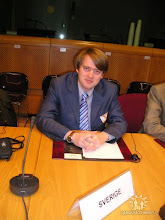Click here for document (approximately 163 pages)
The Pre-Trial Chamber II of the International Criminal Court recently granted the Prosecutor’s request to commence an investigation of crimes against humanity allegedly committed in Kenya.
The majority concluded that the evidence presented by the Prosecution, along with the lower standard of proof applicable at this particular stage, provided reasonable basis to believe that crimes against humanity were committed in Kenya. This decision clears the way for the Prosecution to investigate crimes against humanity committed between 1 June 2005 (date on which Kenya became a state party to the Rome Statute) and 26 November 2009 (date on which the Prosecutor filed the request to investigate).
Judge Hans-Peter Kaul strongly dissented. He believed that the crimes committed in Kenya in relation to the post-election violence of 2007–2008 did not qualify as crimes against humanity under the Court’s statute. As such, he noted, the Court lacked jurisdiction.
Tuesday, 13 April 2010
Treaty and Protocol Between the US and Russia on Measures for the Further Reduction and Limitation of Strategic Offensive Arms (8 April 2010)
Click here for Treaty (approximately 17 pages); click here for Protocol (approximately 165 pages)
The United States and Russia have signed a nuclear-arms-reduction treaty in Prague, thus agreeing to reduce and limit their “strategic offensive arms” arsenals. If ratified, the agreement will remain in force for ten years “unless it is superseded earlier by a subsequent agreement on the reduction and limitation of strategic offensive arms”.
The parties also agreed that the right to withdraw from the treaty will be triggered if either party determines that “extraordinary events” jeopardize their “supreme interest”.
Times Online reports that the agreement would require Russia and the United States, “holders of more than 90 per cent of the world’s nuclear weapons – to slash their respective arsenals by about a third and reduce launchers by a half within seven years”.
Another issue that the treaty does not discuss but that the parties will inevitably face is disposal of the nuclear arms. According to a NY Times article, “[t]he plutonium that is the key ingredient in thousands of nuclear weapons sidelined in the new arms control treaty between the United States and Russia is likely to be around for decades at least, according to experts”.
Source: American Society of International Law
The United States and Russia have signed a nuclear-arms-reduction treaty in Prague, thus agreeing to reduce and limit their “strategic offensive arms” arsenals. If ratified, the agreement will remain in force for ten years “unless it is superseded earlier by a subsequent agreement on the reduction and limitation of strategic offensive arms”.
The parties also agreed that the right to withdraw from the treaty will be triggered if either party determines that “extraordinary events” jeopardize their “supreme interest”.
Times Online reports that the agreement would require Russia and the United States, “holders of more than 90 per cent of the world’s nuclear weapons – to slash their respective arsenals by about a third and reduce launchers by a half within seven years”.
Another issue that the treaty does not discuss but that the parties will inevitably face is disposal of the nuclear arms. According to a NY Times article, “[t]he plutonium that is the key ingredient in thousands of nuclear weapons sidelined in the new arms control treaty between the United States and Russia is likely to be around for decades at least, according to experts”.
Source: American Society of International Law
Subscribe to:
Posts (Atom)
